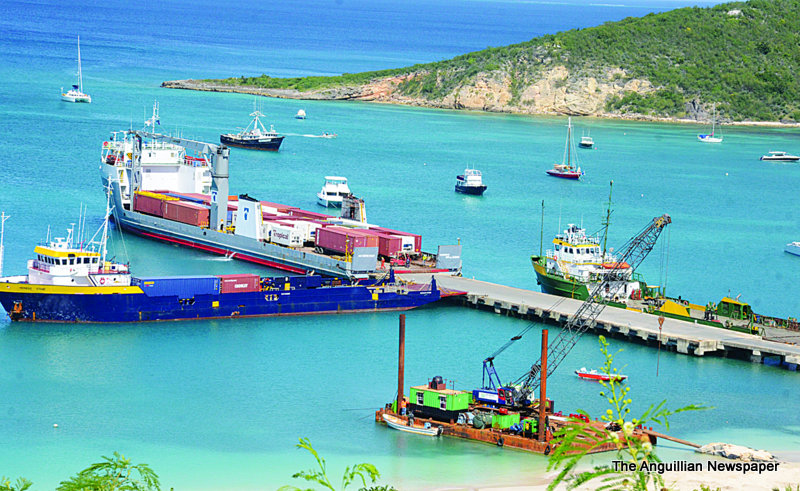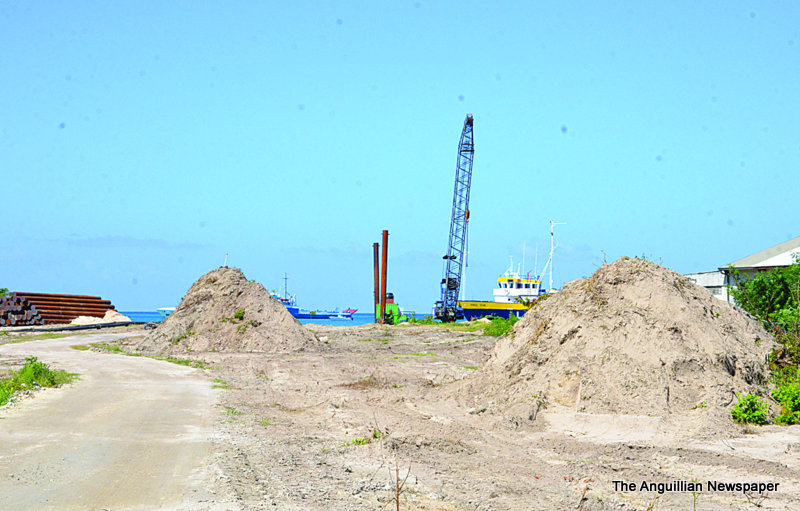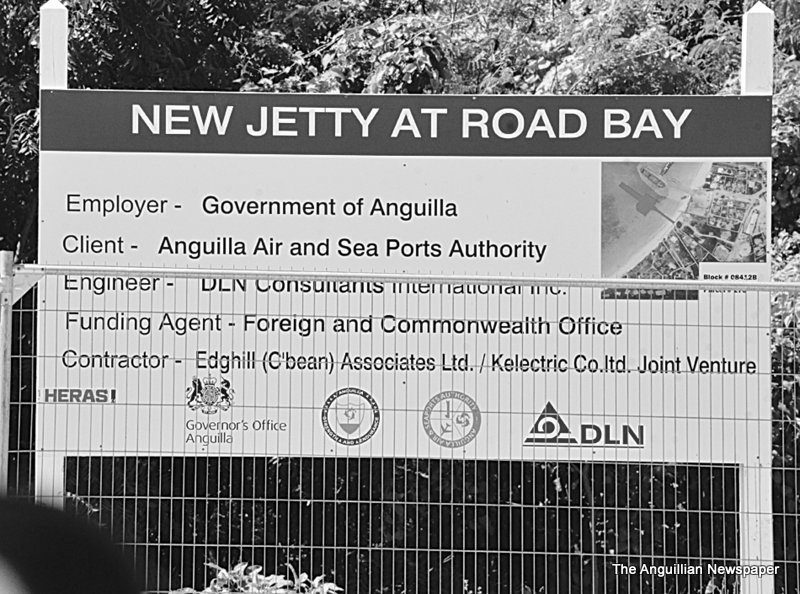

 Preparatory work is now in progress for the construction of the new cargo jetty at Road Bay, adding significantly to the current public sector projects involving schools and health facilities in Anguilla. While the current projects are being funded from the humanitarian grant of 60 million pounds provided by the UK Government, in the aftermath of Hurricane Irma, the 13 million US dollars grant for the Road Bay jetty is coming from a separate UK Government funding source.
Preparatory work is now in progress for the construction of the new cargo jetty at Road Bay, adding significantly to the current public sector projects involving schools and health facilities in Anguilla. While the current projects are being funded from the humanitarian grant of 60 million pounds provided by the UK Government, in the aftermath of Hurricane Irma, the 13 million US dollars grant for the Road Bay jetty is coming from a separate UK Government funding source.
Project Coordinator for the Road Bay jetty, Anguillian Engineer, Mr. Shomari Kentish, told this newspaper: “We are currently at the beginning stage of the project. The contractor assumed the site since in December 2019, but he has now formally started to prepare for the removal of the top soil and dredging the ocean bed. To date, he has erected some temporary fencing; refurbished the offices; has a considerable amount of plant on the ground including cranes, other vehicles, barges, etc. and water and electricity to execute his works.” The contractor involves a joint venture agreement between Kelectric & Associates of St. Vincent and Edgehill & Associates of Barbados.
The new jetty will be built some 70 metres south of the present pier originally constructed in 1971 and substantially repaired in recent years to prevent its feared collapse. Some three-and-a -half acres of land, to the east, have already been acquired by Government for the approach area to, and facilities for, the new jetty.
There are a number of privately-owned buildings, comprising mainly dwelling houses, in the vicinity, some of which will have to be relocated later as the port development progresses. On this matter, Mr. Kentish stated: “There is an overall master plan that the Anguilla Air and Sea Ports Authority (AASPA), and the Government of Anguilla, are pursuing to expand the port area. We have had quite a few discussions with the landowners, and we are continuing to have dialogue with them with a view of reaching a negotiated acquisition. As we know, a port is not a stagnant business. It has to grow and that is why we have to acquire more land.”
Mr. Kentish explained that the jetty will extend for about 187 metres out to sea, and some 10 -15 metres longer than the opposite longstanding jetty. “The present draft (depth of water for anchorage) will remain the same,” he said. “At the existing jetty there are about six metres [deep] at the head – receding to a lower draft to nothing as we come to the shore. The idea with the new jetty is that we want to maintain the existing draft of six metres at the head, as well, and we will undertake a bit of dredging for that reality.”
Why is it that there will be two jetties side by side and almost the same length?
Mr. Kentish replied: “AASPA has foreseen that, with the not-too-long-ago repairs of the existing jetty, there could be some additional value and future use for it. The initial plan was to remove it on completion of the new jetty but, given the circumstances, we decided to retain it.”
ASSPA’s CEO, Mr. Sherman Williams, who was sitting nearby, interjected: “Let me further comment on the two jetties. When the UK Marine Engineers came to Anguilla and saw the existing jetty, one of the options was to repair it, giving it a shelf life of not more than beyond five years. There was no way that we could have planned the island’s port development with a jetty only to fail in five years. Hence AASPA saw the need, with the assistance of the UK Government, to take advantage of building a new jetty. The new jetty is a bridge between the economic and social aspects at the Road Bay Port coupled with the future use of the proposed development at Corito. What we will do at Corito (on Anguilla’s south coast) is still undefined.
“What we are dealing with now is the need for a new jetty to allow goods and services and people in and out of Anguilla in an efficient manner – hence the need for the new jetty. There is still some use for the old jetty especially when we are looking for a place to berth some of the cruise tenders, and small vessels, as we try to develop the marine-base jetty. To answer the question more directly, AASPA didn’t envision the use of two jetties, but there needs to be a dedicated jetty to allow the efficiency of goods and services without any hiccups in the foreseeable future.”
While the existing or old jetty is largely a wooden structure, the new one will be all concrete – of course with the supporting steel piles driven at a slant angle in the seabed. “This new jetty will be built with the dynamics especially for roll-on roll-off vessels,” Williams went on. “The current jetty was not designed for roll-on roll-off operations. It was more dedicated to load-on load-off – basically with the use of a crane. As it was not built for purpose, that would have added to the deterioration of the jetty. The decision for a new jetty takes into account the need for a proper and purpose-built facility.”
Mr. Williams stressed that the 13 million dollars represented just the cost of the jetty. “To make it clear, this money is only for the construction of the jetty,” he stated. “AASPA, the Government of Anguilla and, even again with the Foreign and Commonwealth Office, will have to find the means to get the upland development constructed to support the jetty.”
Asked about local employees and equipment, Mr. Kentish replied:
“It is highly specialist work, so the degree to which there will be local persons actually engaging in the construction of this facility will be quite minimal. There are a few pieces of specialist equipment which the contractor has brought in but, for the most part, the equipment has been sourced locally.”
The jetty is expected to be built in 13 months. The contracted consultant and manager of the project is DLN Consultants with responsibility for the day to day operations. He reports to AASPA, and the Government of Anguilla, and works in close cooperation with Mr. Kentish.
The offices for the project are located in the nearby former Pelican Villa which the Government recently acquired. The building was refurbished by Greig’s Construction and Heavy Equipment Company. Meanwhile, the building east of the Sandy Ground ball field, formerly occupied by Anguilla Rums, has also been acquired by the Government for use in the port development.
The building of the new jetty will contribute to the other shipping, cruising, boat-racing and fishing activities in Road Bay, thus making the port quite busy at times.







